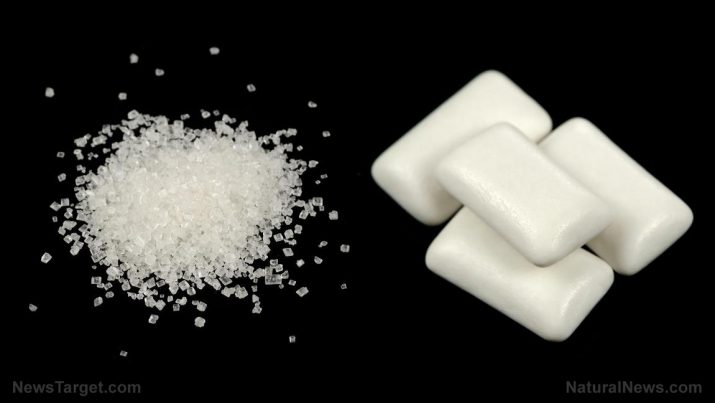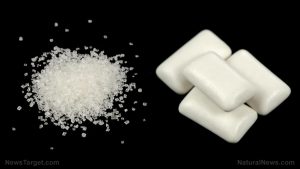
Sorbitol sources, health risks
Tuesday, October 03, 2017 by Frances Bloomfield
http://www.naturalpedia.com/sorbitol-sources-health-risks.html

Sorbitol, also known as sorbit or glucitol, is a polyol or sugar alcohol found in numerous fruits, such as berries. In addition to being a naturally-occurring substance, sorbitol can be synthetically produced from glucose as well.
A single gram of sorbitol contains 2.6 calories. Sorbitol has a Glycemic Index (GI) number of nine; 60 percent sweetness relative to sucrose, and zero carbohydrates. As such, sorbitol is often utilized as a sweetener in sugar-free foods and foods marketed towards diabetic patients.
More than just being used as a sweetening agent, sorbitol has numerous applications in the food industry that range from acting as a fat replacer to a texturizer to a bulking agent. Furthermore, sorbitol can be used to sweeten toothpastes, mouthwashes, lozenges, and medicinal syrups.

Harmful effects that can be caused by sorbitol
The gastrointestinal problems most commonly associated with sorbitol are bloating and diarrhea. Sorbitol takes a long time to digest and remains in the small intestine until this happens. There, it serves as a place for bacteria to ferment and produce the hydrogen gas that lead to bloating, abdominal cramps, and severe flatulence.
In addition, sorbitol draws water into the large intestine and stimulates bowel movements in the process. While this makes it effective as a laxative aid, the diarrhea can, in turn, lead to dehydration and the loss of important electrolytes. Due to the aforementioned harmful gastrointestinal problems, individuals who have been diagnosed with small intestinal bacterial overgrowth and irritable bowel syndrome are recommended avoiding foods containing sorbitol.
Electrolyte or fluid loss caused by sorbitol-related diarrhea will typically manifest through mood changes, abnormal heartbeats, increased thirst, dry mouth, the inability to urinate, and changes in the amount of urine being passed.
One other problem associated with sorbitol is the acidification of blood. This is the byproduct of lactic acidosis, a condition wherein there’s an excessive buildup of lactic acid because the body’s cells produce more lactic acid than they’re capable of metabolizing. Lactic acid is derived from glucose, so the overabundance of sorbitol kicks up lactic acid production into overdrive.
While not common, allergic reactions to sorbitol can occur. The symptoms will usually include red, peeling, or blistered skin, throat or chest tightness, difficulty in breathing and speaking, and swelling of the face, throat, mouth, and tongue.
Although sugar alcohols like sorbitol are sugar free, they’re still a kind of carbohydrate and can therefore influence a person’s blood sugar levels. Diabetic patients are recommended to either limit their consumption of sorbitol-based food products or keep away from these foods.
When sorbitol interacts with potassium binders, it can cause intestinal or kidney damage, so individuals on these types of medication should avoid sorbitol as much as possible.
Taking alcohol in combination with sorbitol has been known to worsen many of the most common side effects of sorbitol, most notably vomiting, nausea, dry mouth, and dehydration.
Body systems harmed by sorbitol
Because sorbitol has a rather pronounced laxative effective, the digestive system is the part of the body most affected by this sugar alcohol. The sheer variety of gastrointestinal distresses caused by the over-consumption of sorbitol products are well documented.
Where to learn more
- #3) Artificial Sweeteners: Sorbitol, Aspartame and Sucralose – They trick the body into ingesting them because they taste sweet – The 3 Trojan horses of the cancer-food industry
- Demystifying “sugar alcohol”: Is it a suitable substitute for ordinary sugar?
- Sorbitol causes premature cataracts, retinopathy, heavy weight loss, and peripheral neuropathy
- Sorbitol Linked to Bowel Problems: Chronic Diarrhea, Abdominal Pain
- Watch out for these nine TOXIC ingredients in your toothpaste
Summary
Sorbitol is a sugar alcohol and popular sugar substitute that can cause a number of health problems. The most prevalent of these are gastrointestinal conditions such as diarrhea, bloating, flatulence, and electrolyte loss, making sorbitol a harmful substance for the digestive system. In addition, sorbitol has been known to increase the risk for hyperglycemia and lactic acidosis, as well as cause allergic reactions in certain people.
Sources include:
NutrientsReview.com
PubChem.NCBI.NLM.NIH.gov
Livestrong.com 1
Livestrong.com 2
MedicineNet.com
Tagged Under: Tags: sorbitol





